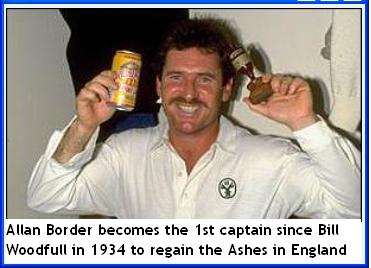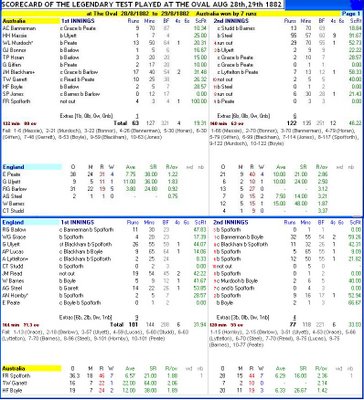 Today marks the 124th Anniversary of cricket’s historic battle, the 1882 Oval Test match's conclusion that ended on 29th of August, 1882. England’s crushing defeat while chasing 85 runs victory target has not only gave birth to the Ashes legend but also became a part of cricketing folklore that continues to amaze even today both the observers and the lovers of the game alike.
Today marks the 124th Anniversary of cricket’s historic battle, the 1882 Oval Test match's conclusion that ended on 29th of August, 1882. England’s crushing defeat while chasing 85 runs victory target has not only gave birth to the Ashes legend but also became a part of cricketing folklore that continues to amaze even today both the observers and the lovers of the game alike.Let us recollect the single most important test match in the history of cricket that created a permanent rivalry between England and Australia and the imaginary Ashes Urn that has become the most sought after award for these countries. A Test series victory to either defend or regain the Ashes can send the entire populations of these countries go delirious as was the case with England’s 2-1 last years Ashes. Whenever these two countries meet to fight for the Cricket’s most coveted trophy, attention of these whole nations' cricket crazy public will be focused on who will win the Ashes and there by prove their supremacy over the other.
The 1882 Test match , which was started on 28th August was finished in less than two days with 20 wickets falling on each of the day's play. In other words, the entire test match lasted for just half of the duration of today’s county championship match. Though the match was over in less than two days the impact of the result is still reverberating, after 124 years, in the mindset of the cricket loving public of England. It was the ninth ever test match these countries were playing and Australia winning four of them and England two. Other two ended as draws with both teams reaching an agreement. It was also only the 2nd test match in England since the 1880 Oval test which was won by England by 5 wickets and WG Grace hit a century on debut and England’s 1st century in test cricket.
Grace did not tour Australia with Alfred Shaw’s 1881/82 team. So now with WG Grace, arguably the game’s greatest figure and more famous than English Prime Minister Gladstone or the heir to the Royal throne during those times, back in the business and in the playing eleven, the whole of England was waiting to crush the Aussies and avenge their defeats of the 1881/82 winter tour of Australia where England failed to win a single test in 4 matches they played. The stakes were high and nothing but a miserable loss by the Billy Murdoch’s touring Australian team would satiate their wanton desires.
The match was scheduled to be played for 3 days duration on 28th, 29th and 30th of August 1882. Unlike in Australia, where all the test matches were played till a result was attained or a draw is mutually agreed upon (It remained that way for all the test matches played in Australia till the 1st test of the 1946/47 series at Brisbane, which was the 1st test match played in Australia after World War II), test matches in England were stipulated.
The only test played in England before this test which Englan won and the 152 made by Doctor W.G. Grace was still fresh in people’s mind. They were anticipating the same kind of fireworks from their idol and ignored the presence of demon Fred Spofforth who did not play in that test. In the only test that Spofforth played during the 1881/82 tour he was plagued with injuries and fitness worries, and did not bowl at even a shade of the DEMON he was portrayed as taking 1 for 92 and none for 36 in the 4th and final test at Melbourne which ended as a draw with mutual agreement. This test remained as the last drawn encounter in all tests played in Australia till 1946/47. The time limit was first imposed after the World War II and the 3rd Ashes test of that series played at Melbourne though played for 6 days provided the next occasion.
 As far as English fans were concerned Spofforth would be a non-factor as the Doctor claimed more wickets than the demon with figures of 8 for 93 & 4 for 59 against Spofforth’s 5 for 60 in Australia’s last tour match before the Oval Test against Gloucestershire. That match was reduced to a single day’s play after the first two days were abandoned because of rain. England’s hopes were now flying very high and since the Doctor failed with the bat in that match getting clean bowled by Spofforth, speculations were rife that Grace would be taking his revenge in this test. So the stage was set for the most anticipated cricket match in England for over two years.
As far as English fans were concerned Spofforth would be a non-factor as the Doctor claimed more wickets than the demon with figures of 8 for 93 & 4 for 59 against Spofforth’s 5 for 60 in Australia’s last tour match before the Oval Test against Gloucestershire. That match was reduced to a single day’s play after the first two days were abandoned because of rain. England’s hopes were now flying very high and since the Doctor failed with the bat in that match getting clean bowled by Spofforth, speculations were rife that Grace would be taking his revenge in this test. So the stage was set for the most anticipated cricket match in England for over two years. England was captained by Albert Hornby, nicknamed ‘Monkey’ for the excessive energy he displayed on the field and also referred to as ‘the boss’ by his teammates, whereas Australia was captained by Billy Murdoch, who shared a special relationship with Fred Spofforth. It should be noted that Spofforth refused to play the first ever test match played at Melbourne in 1876/77 as Jack Blackham was preferred by the selectors as wicket-keeper over his close friend and team mate Billy Murdoch. He played the next test only after making certain that Murdoch too was in the side. Such was his allegiance to his team captain.
Australia won the toss and elected to bat on a pitch which had seen two full days of heavy downpour. Alec Bannerman & Hugh Massie opened the Australian innings and within no time lost their 1st wicket when Massie was clean bowled by George Ulyett for 1. Murdoch and Bannerman struggled for 50 minutes on the sticky wicket before Ed Peate clean bowled the Aussie skipper for an unlucky 13 and the score reading 21.
 After that the floodgates have opened as the left hand bowling combination of Ed Peate and Dick Barlow, who holds the distinction of being one of the few bowlers who have taken wicket with the first ball in first class cricket, sliced through the Australian innings and the visitors were bowled out for 63. Aussie Keeper Blackham top scored with 17 and Tom Garret was the only other batsman who could reach double figures. Barlow returned with figures of 5 for 19 of 31 overs, 22 of which were maidens. Peate took 4 for 31 of 38 overs with 24 maidens. Grace took a catch each of the bowling of Peate and Barlow to dismiss Bannerman and Blackham. So when Australia was bundled out for 63 in 80 four ball overs under three hours it appeared as if England’s supremacy will be displayed without any challenge.
After that the floodgates have opened as the left hand bowling combination of Ed Peate and Dick Barlow, who holds the distinction of being one of the few bowlers who have taken wicket with the first ball in first class cricket, sliced through the Australian innings and the visitors were bowled out for 63. Aussie Keeper Blackham top scored with 17 and Tom Garret was the only other batsman who could reach double figures. Barlow returned with figures of 5 for 19 of 31 overs, 22 of which were maidens. Peate took 4 for 31 of 38 overs with 24 maidens. Grace took a catch each of the bowling of Peate and Barlow to dismiss Bannerman and Blackham. So when Australia was bundled out for 63 in 80 four ball overs under three hours it appeared as if England’s supremacy will be displayed without any challenge.But the Demon had other thoughts, now free from his injuries and bowling at a lethal pace and unchanged through out the England’s innings, he accounted for 7 wickets for 46 runs including that of WG Grace whom he clean bowled for 4. England could manage just 101 runs in their innings. Blackham took two catches and affected a stumping to dismiss England’s top scorer George Ulyett of the bowling off, yes, Fred Spofforth. Blackham almost always stood near the stumps irrespective of the nature of bowling.
A lead of 38 runs on a sticky wicket with more rain on the cards looked like a winning lead for England. Especially the following morning Australia had to start their second innings after a downpour. Overnight rain made the pitch so muddy, according to Dick Barlow it was unplayable as footholds were very slippery and ball felt like a soap cake in the hand.
Australia took advantage of the unfavorable conditions to the fielding side and erased the deficit before the first wicket fell at 66 with Massie making 55 of 60 balls in 57 minutes. Murdoch came into bat when Australia lost their next wicket, that of Ulyett for 2 and saw Bannerman depart without adding a run to Australia’s score of 70. At 79 Horan and Giffen both lost their wicket in similar fashion c Grace b Peate. With Australia’s lead a handful of 41 runs and entire top order in the pavilion things looked pretty dim for Australia. Murdoch then waged a lone battle and added 20 runs with Blackham and another 15 with Sammy Jones.
As the situation seemed getting out of control, an un’GRACE’ful act by WG Grace gave an indication of the frustration of the entire English team. Wisden recorded the ungraceful act as follows: “At 114 Jones was run out in a way which gave much dissatisfaction to Murdoch and the other Australians. Murdoch played a ball to leg, for which Lyttleton ran. The ball was returned, and Jones, having completed the first run, and thinking wrongly, but naturally, that the ball was dead, went out of his ground. Grace put his wicket down and the umpire gave him out. Several of the team members spoke angrily of Graces’ action.
Legend has it that a remark by a member in the pavilion within the earshot of Fred Spofforth as he walked into bat which sounded something in the lines of, Sammy Jones should thank the Doctor for teaching him something about cricket, may have triggered the subsequent demolition job by the Demon. Murdoch made 29 valuable runs before he ran out of partners and was run out when the score was 122 for 9. Boyle did not last long after that and was out at the same score leaving England a tiny target of 85 to win the test match.
 During the innings break Spofforth told his teammates that "this thng can be done" and Australia can still win the match. Living up to his words Spofforth bowled his heart out and clean bowled English Captain Monkey Hornby and Dick Barlow with successive deliveries with the score reading at 15. But the Doctor was still there and in the company of Ulyett added 36 runs at more than run a minute. At 51 for 2 defeat seemed inevitable for Australia. But the demon struck again by removing George Ulyett and when Grace himself was caught by Bannerman off the bowling of Boyle for 32 with the score reading 53 and victory is still away by 32 runs, the entire scenario has suddenly changed.
During the innings break Spofforth told his teammates that "this thng can be done" and Australia can still win the match. Living up to his words Spofforth bowled his heart out and clean bowled English Captain Monkey Hornby and Dick Barlow with successive deliveries with the score reading at 15. But the Doctor was still there and in the company of Ulyett added 36 runs at more than run a minute. At 51 for 2 defeat seemed inevitable for Australia. But the demon struck again by removing George Ulyett and when Grace himself was caught by Bannerman off the bowling of Boyle for 32 with the score reading 53 and victory is still away by 32 runs, the entire scenario has suddenly changed.The Doctor may have smiled and felt happier while walking back to the pavillion that he did not give his wicket to Spofforth, the second time around. But England felt the mounting pressure as Boyle and Spofforth bowled 12 consecutive maidens before conceding a run and then followed it by 4 more maidens. The resistance did not lost long and once Spofforth clean bowled Hon. Alfred Lyttelton for 12, the remaining English batsmen succumbed to the enormous pressure and tension that built up both on and off the field as Spofforth cut through their defenses.
From 66 for 4 they were all out 77 leaving Australia victors by 7 runs. Spofforth took 4 wickets for 2 runs during his last 11 overs. Spofforth’s figures for the innings read an amazing 7 for 44 of 28 overs with 15 maiden in another unchanged bowling spell which lasted the whole of England’s 2nd innings. Spofforth’s match figures of 14 for 90 stood as best ever by an Australian bowler for 90 years till Bob Massie surpassed it in 1972 with a dream debut of 16 for 137 in the 2nd test of the 1972 Ashes at Lord’s.
Australian batsman Tom Horan, who would captain an Australian side in the 2nd test of the 1884/85 series with a team that would have 11 changes from the previous test at Adelaide as the whole touring party of the 1884 Ashes in England demanded 50% of the gate money for which Australian cricketing authorities did not yield, recalled the tension that prevailed during the closing moments of the game: “In the excitement one spectator dropped down dead and another gnawed out pieces from his umbrella handle. The lips of one English batsman as he made his way to the wicket were ashen grey and his throat so parched he could hardly speak”.
In the end even though the test match proved out to be a thriller with fluctuating fortunes it turned out to be a major disappointment for an entire nation. More so for the cricket fans and the cricketing media and led to the now famous ‘ The Sporting Times’ mock obituary notice which was published four days later. So the pride that was surrendered on this day August 29th, 124 years back and mocked at by an entire cricketing world of those times still keeps haunting the English lions and makes an Ashes Series Win over the old enemies more precious than any other sporting achievement. As Australia keeps trying to deny that pleasure there can be no better a sports battle than the legendary Ashes Series.



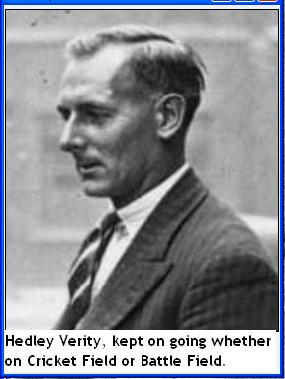




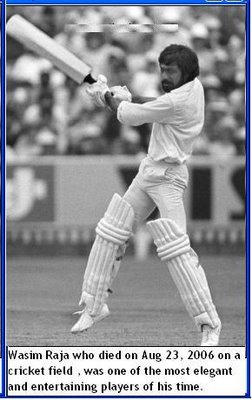
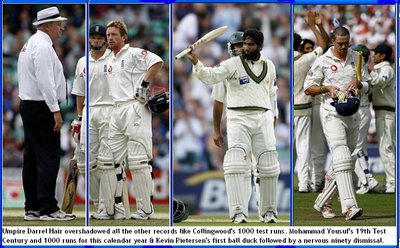


 Branded as the weakest Australian team ever to visit England, Allan Border’s Australian team under the able tutelage of their coach Bob Simpson, started their 1989 summer campaign on May 7th with the traditional match against Duchess of Norfolk XI. They beat them by 120 runs in a limited over match and then went on to win four more such games against non-county teams. Neither English Press nor the fans did give much importance to those games as they knew very well that Australia did not win a single test series of any importance under Allan Border’s captaincy. Ever since Kim Hughes broke down with tears on that fateful day of Nov 26th 1984 while reading his resignation speech, Australian cricket touched the nadir and went into a period of darkness, which given a chance and if at all possible every Australian would like to erase from their memory.
Branded as the weakest Australian team ever to visit England, Allan Border’s Australian team under the able tutelage of their coach Bob Simpson, started their 1989 summer campaign on May 7th with the traditional match against Duchess of Norfolk XI. They beat them by 120 runs in a limited over match and then went on to win four more such games against non-county teams. Neither English Press nor the fans did give much importance to those games as they knew very well that Australia did not win a single test series of any importance under Allan Border’s captaincy. Ever since Kim Hughes broke down with tears on that fateful day of Nov 26th 1984 while reading his resignation speech, Australian cricket touched the nadir and went into a period of darkness, which given a chance and if at all possible every Australian would like to erase from their memory.

